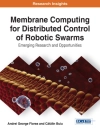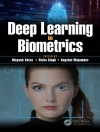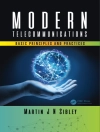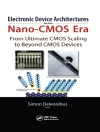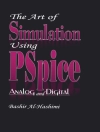The book is motivated by the pivotal issue: what is the performance limit of active control and energy harvesting? It aims to develop systematic design methodologies with a “visualization technique” where the performance limit can be readily determined solely based on visual inspections.
Modern technological systems have evolved toward high speed, heavy load, lightweight, flexible operation and extreme conditions, as demonstrated in aerospace, marine, transportation and manufacturing industries. The associated vibration and noise issues have become such problematic that they may significantly confine the performance of the systems, to say the discomfort at least.
Through the geometric representation of the performance specifications, fundamental issues such as (1) the existence of feasible controllers; (2) the optimality of controllers; (3) the performance limit of controllers; (4) compromisability among the performance specifications; (5) the synthesis of controllers; and(6) the influence of constraints on optimal solutions can all be resolved within the proposed framework. The state of the art is thus refined with a new approach complementary to those optimization-based routines, where extra effort would have to be exercised to disclose the compromisability of performance specifications.The proposed book will result in a new design methodology—performance limit-oriented active control. It was initiated by the author with the project “Active Control for Performance Limit” (ACPL). A series of fundamental results are obtained and will be disseminated in this book. The results are verified through extensive numerical demonstrations and are expected to provide useful guidance for practical engineering in the vibration and noise industry and research.
Cuprins
Introduction to Vibration & Noise Control Problems.- Active Control for Performance Limit.- Active Control with Constraints & Uncertainty.- Active Control with Extensions.- Energy Harvesting for Performance Limit.- Active Vibration Distribution.- Conclusions & Perspectives.
Despre autor
Professor Jiqiang Wang is with Research Centre in Systems Engineering for Special Aircrafts, Ningbo Institute of Materials Technology & Engineering (NIMTE), Chinese Academy of Sciences (CAS). He receives bachelor degrees in both management & mechanical engineering from Xi’an Jiaotong University, China in 2003. He obtains his M.Sc. and Ph.D. in control systems, both from the University of Sheffield, UK in 2005, 2008, respectively. He then works as a research fellow at the Industrial Control Centre, University of Strathclyde, Glasgow. From October 2009 to November 2021, he works as an associate professor at Nanjing University of Aeronautics & Astronautics, before moving to Ningbo Institute of Materials Technology & Engineering, Chinese Academy of Sciences as a professor in November 2021.
His research interests are in the general area of complex systems modeling, control and health management, with particular application to active control and energy harvesting, smart structures and turbine power systems. Specifically, he developed systematically a geometric design methodology for active control and energy harvesting toward performance limit; he initiated and proposed model-based nonlinear control of gas turbine power systems. He has been involved around 30 research projects from various sources as PIs & Co-PIs. He has published over 100 papers in international journals and conferences, with 11 filed patents and further 12 patents in review.
He has been the recipients for Distinguished Project of Natural Science Foundation of Jiangsu Province; Distinguished Project of Fundamental Research Projects for Central Universities, Outstanding Paper Awards 2021 from Chinese Simulation Federation, Outstanding Paper Awards from ICANDVC-2021, Best Paper Awards from CISC-2019 and Best Paper Awards from ICMIC-2019. He serves as the sectary to Society of Artificial Intelligence Simulation Technology, Chinese Simulation Federation; a committee member of Society of Intelligent Aerospace Systems, Chinese Association for Artificial Intelligence.





